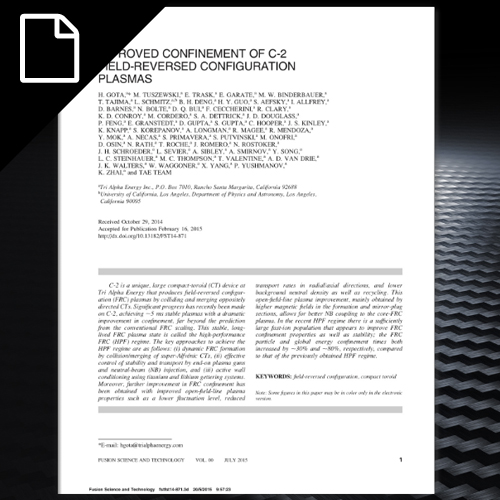
Feb 2015 | Papers, Fusion Energy, Fusion Research, Fusion Science, Fusion Technology, Overview, Performance, Plasma Research, Research Library
February 2015 | H. Gota | Fusion Science and Technology | Paper
C-2 is a unique, large compact-toroid (CT) device at TAE Technologies that produces field-reversed configuration (FRC) plasmas by colliding and merging oppositely directed CTs. Significant progress has recently been made on C-2, achieving ,5 ms stable plasmas with a dramatic improvement in confinement, far beyond the prediction from the conventional FRC scaling.
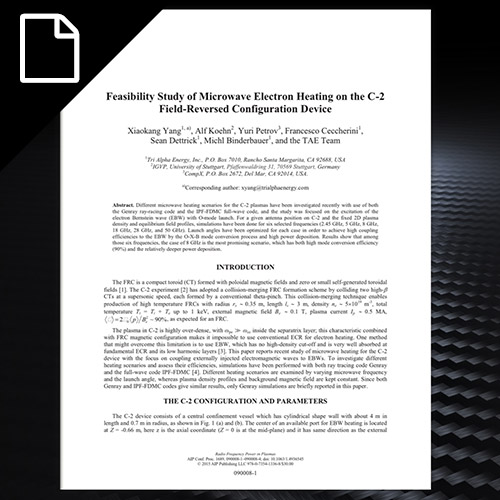
Feb 2015 | Research Library, Papers, Experiment, Fusion Energy, Fusion Research, Fusion Science, Fusion Technology, Heating, Simulation, Waves
February 2015 | X. Yang | AIP Conference Proceedings | Paper
Different microwave heating scenarios for the C-2 plasmas have been investigated recently with use of both the Genray ray-racing code and the IPF-FDMC full-wave code, and the study was focused on the excitation of the electron Bernstein wave (EBW) with O-mode launch.
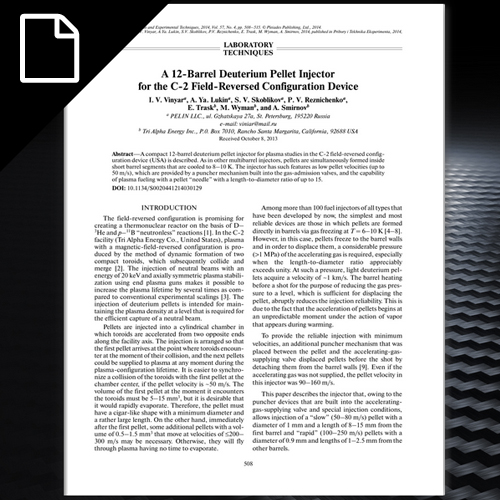
Oct 2014 | Papers, Experiment, Fueling, Fusion Energy, Fusion Research, Fusion Science, Fusion Technology, Plasma Research, Research Library
October 2014 | I. Vinyar | Instruments and Experimental Techniques | Paper
A compact 12-�barrel deuterium pellet injector for plasma studies in the C-�2 field-�reversed config�uration device (USA) is described.
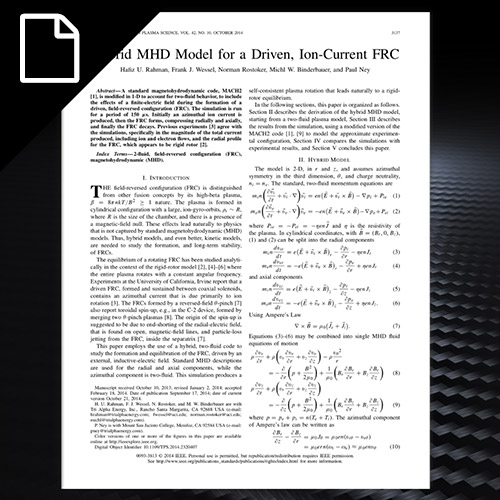
Oct 2014 | Research Library, Papers, Fusion Energy, Fusion Research, Fusion Science, Fusion Technology, Simulation, Top Level
October 2014 | H.U. Rahman | IEEE Transactions on Plasma Science | Paper
A standard magnetohydrodynamic code, MACH2 [1], is modified in 1-D to account for two-fluid behavior, to include the effects of a finite-electric field during the formation of a driven, field-reversed configuration (FRC).
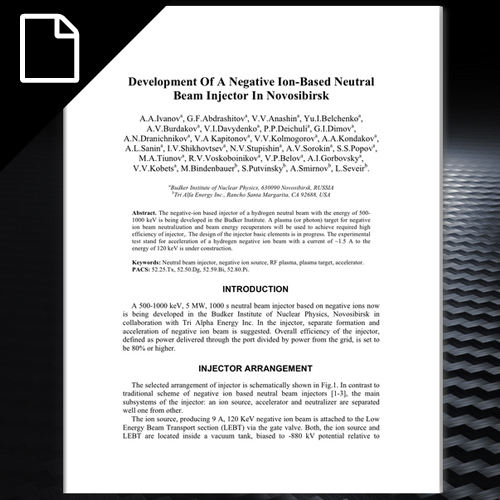
Sep 2014 | Papers, Experiment, Fast Particles, Fusion Energy, Fusion Research, Fusion Science, Fusion Technology, Plasma Research, Research Library
September 2014 | A. Ivanov | Proceedings of NIBS | Paper
The negative-ion based injector of a hydrogen neutral beam with the energy of 500- 1000 keV is being developed in the Budker Institute.




